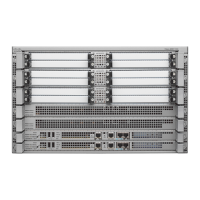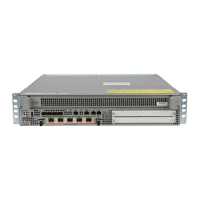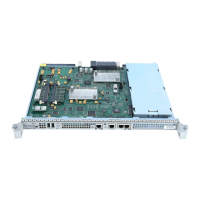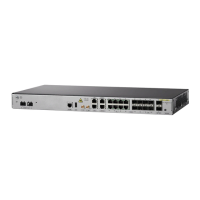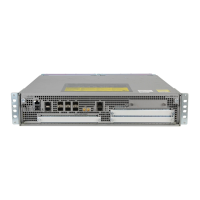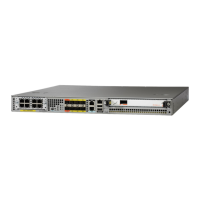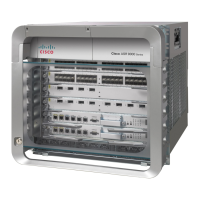Tracing and Trace Management
3
Cisco ASR 1000 Series Aggregation Services Routers Software Configuration Guide
All trace levels are not user-configurable. Specifically, the alert, critical, and notice tracing levels cannot
be set by users. If you wish to trace these messages, set the trace level to a higher level that will collect
these messages.
When setting trace levels, it is also important to remember
that the setting is not done in a configuration
mode, so trace level settings are returned to their defaults after every router reload.
Caution Setting tracing of a module to the debug level or higher can have a negative performance impact. Setting
tracing to this level or higher should be done with discretion.
Caution Setting a large number of modules to high tracing levels can severely degrade performance. If a high
level of tracing is needed in a specific context, it is almost always preferable to set a single module on a
higher tracing level rather than setting multiple modules to high tracing levels.
Viewing a Tracing Level
By default, all modules on the Cisco ASR 1000 Series Routers are set to notice. This setting will be
maintained unless changed by a user.
To see the tracing level for any module on the Cisco ASR 1000 Series Routers, enter the sho
w platform
software trace level command in privileged EXEC or diagnostic mode.
In the following example, the sho
w platform software trace level command is used to view the tracing
levels of the Forwarding Manager processes on the active RP:
Router# show platform software trace level forwarding-manager rp active
Module Name Trace Level
-----------------------------------------------
acl Notice
binos Notice
binos/brand Notice
bipc Notice
bsignal Notice
btrace Notice
cce Notice
cdllib Notice
cef Notice
chasfs Notice
chasutil Notice
erspan Notice
ess Notice
ether-channel Notice
evlib Notice
evutil Notice
file_alloc Notice
fman_rp Notice
fpm Notice
fw Notice
icmp Notice
interfaces Notice
iosd Notice
ipc Notice
ipclog Notice
iphc Notice
ipsec Notice
mgmte-acl Notice

